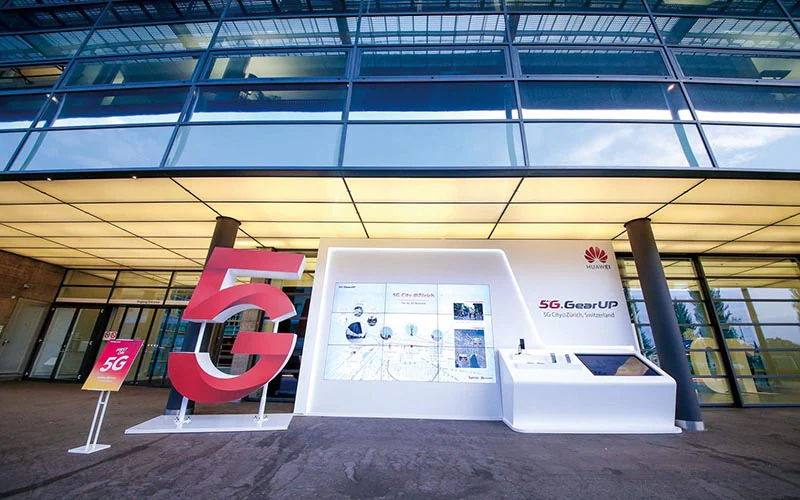Ma Hongbo, President of Huawei Wireless SingleOSS Product Line, delivered a keynote titled "5Go S.M.A.R.T., Ushering Wireless Networks into the Intelligent and Autonomous Era " at the 4th Wireless Autonomous Driving Network Industry Forum. The forum was held within the framework of the 12th Global Mobile Broadband Forum. In his speech, Mr. Ma highlighted the importance of network autonomy for 5G operators, predicting five key areas of evolution for wireless networks: Simplified, Maximizing, Agile, Robust, and Thinking (5Go S.M.A.R.T.). These changes will bring about autonomous driving networks featuring automated O&M, ultimate performance, and low carbon footprint.
Operators Focus on Autonomous Driving Networks
Over the past decade, wireless network evolution has brought new opportunities along with increased network OPEX and O&M complexity. With 5G, the mobile communications industry is promoting the concept of autonomous driving networks by integrating wireless networks with intelligence.
During the keynote, Mr. Ma explained that operators are gradually and hierarchically implementing autonomous driving networks as their core strategy. In fact, according to research by TMF Autonomous Networks in 2021, over 80% of the 42 independently interviewed operators believe that they will deploy a large-scale fully autonomous driving network in the next decade.
5Go S.M.A.R.T.: Five Trends for Wireless Autonomous Driving Networks
Wireless autonomous driving networks will integrate both network and site intelligence, developing independent intelligence processes and gradually evolving toward intelligent autonomy.
Trend 1 Go Simplified: Network construction will become more intelligent and simplified throughout its lifecycle. Intelligence will be introduced to sites, facilitating intelligent sensing and simplified site configuration, sort of like adding "eyes" and a "brain". The intelligence of networks and base stations will collaborate to adapt to a variety of contexts, resulting in network self-configuration and intelligent auxiliary site acceptance. Ultimately, the entire lifecycle of network construction will be simplified.
Trend 2 Go Maximizing: Vertical collaboration will maximize network potential. Intelligence will also be introduced to the air interface, along with using technologies, such as channel graph and scheduling dictionary, for more flexible resource scheduling and spectrum decoupling, maximizing the single-site performance. The network will use 3D beam scheduling and intelligent parameter optimization to maximize performance on all frequency bands. Along with improved performance and experience, the network will balance and maximize network energy efficiency using energy-saving technologies at the site, device, and network layers.
Trend 3 Go Agile: The entire process of 5G services will become more agile. Today, every industry requires better network construction and maintenance than in the past. As such, intelligence will be introduced to the planning, construction, maintenance, and optimization phases of toB networks. This will result in automatic service intent translation, precise intelligent network planning, and proactive service assurance, making 5GtoB service rollout more agile.
Trend 4 Go Robust: 5G networks will become more reliable. Intelligence capabilities, such as fault feature self-learning and intelligent time sequence analysis, will be introduced to implement accurate fault identification and intelligent root cause analysis. This will transform troubleshooting from manual to automatic, implement fault prediction and prevention, transition from passive response to proactive maintenance, enhance network robustness, and ultimately build more reliable 5G networks.
Trend 5 Go Thinking: 5G networks will be able to "think". Together, site and network intelligence will become the foundation for wireless autonomous driving networks. Base stations will gradually become intelligent, creating digital twins. They will also possess device-pipe federated learning capability to add intelligence to each terminal. The powerful computing capability of the wireless intelligent engine will be able to self-learn and self-evolve using massive network data along with algorithms and models. Finally, wireless networks will essentially be able to think.
Ma Hongbo noted, "Currently, autonomous driving networks in the mobile communications field are at the levels between L2 and L3. To achieve fully autonomous driving networks requires the joint efforts of all industry stakeholders in terms of level criteria, evaluation systems, and application collaboration. Huawei will continue to work with operators and industry partners to innovate S.M.A.R.T. and enable autonomous networks."
The 12th Global Mobile Broadband Forum offers an opportunity for the mobile and adjacent vertical ecosystems to reconnect, rebuild, and reimagine a fully connected, intelligent world. Topics currently under discussion with global partners range from maximizing the potential of 5G, including industry use cases and applications, to advancing the mobile future.
For more information, please visit: https://www.huawei.com/en/events/mbbf2021




